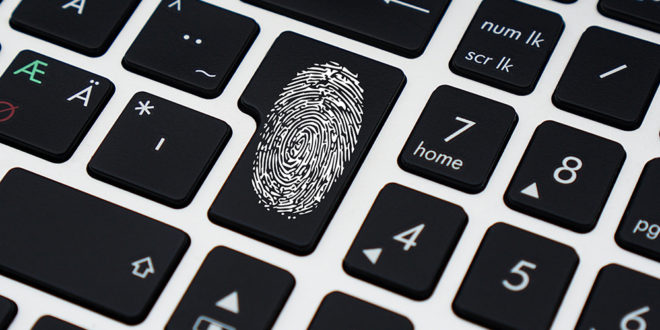On the third of November 2017, Apple unveiled its landmark 10th anniversary smartphone. From the moment it was first showcased, the only thing anyone cared about was the facial recognition technology built into the new phone.
Moving on from the fingerprint scanner incorporated in previous iterations of the iPhone, Apple brought the stuff of Hollywood to life and more importantly brought it to the masses.
What was once reserved for Captain Spock in Star Trek was now a reality and it was available for anyone who wanted it (and could fork out the £1,000 price tag).
The intrigue in the facial recognition unlocking system was sizeable. From those determined to prove the system could be duped to others who simply wanted to transform their face into a unicorn, the hype which built around the landmark smartphone centered almost solely on its biometric identification capabilities.
And while the iPhone X has proved a success for Apple, the public clamour for FaceID has propelled the biometric identification market into a different sphere. As AimBrain head of marketing Karen Quinn explains, the iPhone X whetted the public’s appetite for bio ID systems and the market is ready to respond.
“Fingerprint and facial authentication are now mainstream, thanks to the widespread integration into smartphones and devices,” she says. “Becoming an everyday security step has helped organisations integrate biometrics into their security processes, to authenticate the user based on the way they look, sound and behave.
“We’re seeing an increasing amount of interest in particular in behavioural biometrics; the continual, invisible assessment of a user’s behaviour across any device – be it how they swipe, type, use a mouse or keyboard.”
Likewise GfK technology director Imran Choudhary believes that FaceID has laid the foundations for Bio ID to thrive. “The most well-known and successful form of Bio ID system belongs to Apple in form of their FaceID and TouchID set up,” he says. “Bio ID will eventually be rolled out to almost everything we use a password for today.
“There’s already use cases being drawn up around using Bio ID to enter our homes and it might only be a matter of years before your signature on a paper document becomes a thing of the past. We will no doubt be signing using some form of Bio ID.”
And, according to GfK the rollout of Bio ID is set to be a big market for the industry.
According to the firm’s European sales data, smart products (excluding TVs) make up €1bn in revenues already, and as smart product ownership increases, we can expect Bio ID to grow.
Nearly three quarters of the UK population now have knowledge around smarthome products, according to GfK, and this kind of broad awareness will only help the proliferation of other systems like Bio ID benefitting.
The main benefit and market to tap into is of course security. With the rise in awareness around data breaches, personal and professional cybersecurity is as hot a topic as ever. It is why HSBC has begun trials of voice authentication for banking purposes and equally why companies are integrating fingerprint authentication into their hardware.
The same reason which drives personal desire for FaceID is driving the biometric market within the professional sphere.
As Toshiba’s head of sales, marketing and operations for Northern Europe Nick Offin explains ‘an increasingly mobile global workforce, and ever-tighter data laws’ means ‘biometric authentication is a growing trend which enables organisations to put in place robust device-level protection as a first barrier of defence to supplement wider network controls and measures’.
“Employees are often the weakest link in an IT security chain, and biometric tools help to overcome this vulnerability at a time when its risk is arguably greater than ever,” he says. “Where traditional passwords frequently lack the required complexity, for example, fingerprint and iris scanners offer a more resolute form of defence which can be neither guessed nor easily replicated.
“Combining these with other access barriers for two-factor authentication is an increasingly popular defence mechanism which can deter or delay cyber-criminals in the event of a lost or stolen device.”
Likewise Jesper Frederiksen, general manager of EMEA at Okta believes Bio ID – coupled with traditional security measures – will go a long way to solving the world’s security issues: “Looking from a security perspective, although biometrics will not completely replace passwords in the immediate future, they do provide a supporting security layer as part of a multi-factor authentication model.
“The financial services sector, for example, has already experimented with biometrics for regulating access to certain services. Major banks have incorporated tools such as voice and fingerprint recognition as an additional security measure to ensure that only the correct party receives access, protecting against bad actors.”
While FaceID has been a huge success for Apple and Bio ID systems are becoming the norm for consumers, there are plenty more markets where it can be applied.
One other area which is starting to reap the rewards of facial recognition systems is in transport. Face scanners synced to passport photos have been around at most Western airports for some years now.
However, in London, facial recognition has the capability to transform the way we travel. As Dave Roat, strategy manager at Cubic Transportation Systems, explains, congestion in the capital is set to double over the next 20 years and finding a way to cater for so many people is essential to the success of the country.
“We have been developing our Gateless Gateline solution which enables commuters to use their own biometrics to validate their journeys, in the form of facial recognition or palm vein scanning.
“Rather than relying on traditional card or paper ticketing solutions currently in place, cameras and sensors can detect and validate customer journeys through these methods, while also alerting the passenger and transit operators if there are insufficient funds.
“The solution also makes use of corridors instead of single lanes, boosting customer throughput to 50 people per minute.”
Despite its impressive applications, Roat issues a word of caution about adopting the technology before it is ready.
“Like all emerging technologies, facial recognition must undergo stringent trial and error testing to provide the accuracy required,” he says.
“While consumer acceptance is growing, biometrics still isn’t ready to be deployed for mass usage, especially if you consider the growing number of commuters travelling through stations at any given time.
“A case in example is the Metropolitan Police, which recently came under fire for implementing a facial recognition system that failed to identify and apprehend criminals.”
So despite the demand, the technology and the possible markets, this goes to show that there is still some way to go for biometrics to work on a mass scale.
PCR’s Sector Spotlight on Security – in association with BullGuard – is running throughout October – click here for more articles.
Like this content? Sign up for the free PCR Daily Digest email service to get the latest tech news straight to your inbox. You can also follow PCR on Twitter and Facebook.
 PCR Tech and IT retail, distribution and vendor news
PCR Tech and IT retail, distribution and vendor news




